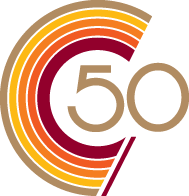Undergraduate programs
Concordia rates fourth in Canada and in the top 150 in the world for communication and media studies.
Our programs combine theory and practice, giving students the tools to make and understand media and the many ways it shapes the world we live in.
Discover our programs:

Major in Communication Studies
The Communication Studies program is unique for its combined approach to theory and production. You’ll have access to excellent facilities – classrooms, labs/studios and production equipment that prepares you for media production careers in a range of creative work settings like advertising, marketing, public relations, animation, sound recording, performing arts, theatre and more. There is also the option to continue your studies at the graduate level.
Curious to explore what our Communication Studies BA program entails? Watch our video and dive deeper into the world of communication at Concordia.

Major in Communication & Cultural Studies
The Communication and Cultural Studies program involves in-depth study of the social, cultural, political and aesthetic aspects of media and communication. This program engages students in small seminars on critical thinking, media analysis and communications research skills and does not include production classes. This option is particularly well-suited to those pursuing a career in media policy or research and is an excellent pathway to graduate studies.
Ready to uncover our blend of communication and cultural studies in our BA program? Watch our video and gain a deeper understanding of what awaits you at Concordia.
What makes us unique
Are you ready to submit your application?
STEP 1: APPLICATION FORMAT
- If you are a new student applying to Concordia University, you must create an application online. You will also need to submit the Application Letter required by the Department of Communication Studies. Applicants must upload their Application Letter as one PDF File to the Student Centre. Further instructions below.
- If you are already a student in a BA program at Concordia University, you will need to submit the online Change of Concentration Application Form. You will also need to submit the Application Letter required by the Department of Communication Studies. Applicants must upload their Application letter as one PDF file to the Student Centre. Further instructions below.
- If you are already a student at Concordia University but you are NOT in a BA program (JMSB/BFA/GCS), you will need to apply for a Degree Transfer on the MyCU Account. Applicants must also upload their Application Letter as one PDF file to the Student Centre. Further instructions below.
STEP 2: APPLICATION LETTER
All applicants to the BA in Communication Studies and the BA in Communication and Cultural Studies must complete an application letter as a supporting document. This document contains two parts and must be saved as one PDF file.
Please make sure you have followed all the technical guidelines, below, before submitting this supporting document.
When uploading your application letter, be sure to use the correct BA program name in the drop-down menu: Communication Studies Dossier or Communication & Cultural Studies Dossier.
You can also upload your application letter (or any other requested documents for your application) by logging in to the Student Hub and going to My CU Account.
Instructions (as one PDF)
Your application letter provides you with the opportunity to demonstrate your readiness and your motivation to join one of our BA programs (either the BA in Communication Studies program or the BA in Communication & Cultural Studies program).
Please ensure that you have followed all of the technical guidelines, below, when preparing your letter. As detailed below, your letter consists of two parts.
Letter, Part One
Please take some time to review the descriptions of the two BA programs offered in our department. Please also read through the descriptions of undergraduate courses we regularly offer. Then review the research interests, published work, and media projects of the faculty who teach in our department. Having conducted this survey, write a statement (maximum 4000 characters, spaces included) telling us why you want to study in your selected BA program (BA in Communication Studies or BA in Communication & Cultural Studies) and how you believe this program will help you achieve your learning goals.
- What aspects or elements of our program (beyond our ‘reputation’) are attractive to you?
- Are there any specific courses that you find especially relevant to your learning goals?
- Are there any professors whose research or areas of expertise overlap with your own interests and learning goals?
Letter, Part Two
Write a statement (maximum 3000 characters, spaces included) in which you tell us anything else that you would like us to know about you when evaluating your candidacy for admission to our BA program, such as your:
- background
- experience
- aspirations
- special circumstances
Please be sure to indicate clearly in your letter which of our two BA programs you are applying to. If you wish to apply to both BA programs, you must submit a separate letter for each application. It should be made clear, in each letter, how that program relates to your learning goals.
Technical guidelines
- Both parts should be submitted together as a single PDF file.
- Your application letter should be formatted in 12pt Times New Roman font, double-spaced, with 1” margins.
- Your letter must be written in your own words, without the assistance of Generative AI software, such as ChatGPT.
- You are not required to cite any additional sources, but you are free to do so if you wish. In such cases, however, you are expected to use a standard academic citation method (e.g., MLA, APA, or Chicago), which includes providing a list of the references you cite at the end of your letter, with the full bibliographic details formatted according to your chosen citation method. This list of cited references will not be counted as part of your 4000 character limit.
- Use a running header for the entire document using the same name as on your application (last name, first name), the submission date (MM/DD/YY), and consecutive page numbering (bottom right, including page 1).
- Your PDF should be named: Lastname_Firstname_comsapp.pdf (for the BA in Communication Studies program) or Lastname_Firstname_comscultapp.pdf (for the BA in Communication & Cultural Studies program), using your own last and first name in the file name.
The Application Letter component contains 2 parts and must be saved as ONE PDF file. Please make sure you have followed all the technical guidelines, above before submitting this supporting document.
When uploading your Application Letter, be sure to use the correct BA program name in the drop-down menu: Communication Studies Dossier or Communication & Cultural Studies Dossier. You can also upload your Application Letter (or any other requested documents for your application) by logging in to the Student Hub and going to My CU Account.
About PDFs: ‘PDF’ stands for Portable Document Format. These kinds of files are very widely used across all sectors of education, business and the arts, including at Concordia University. Adobe developed this file format to be used with their Acrobat software, but there are lots of free PDF editors for both Mac and PC. Many word-processing applications include a PDF option in their print dialogue box. See a list of recommended free readers. (N.B. We do not offer any warranties for third-party software.)
Applications must be completed and submitted online by March 1ST at 11:59 p.m., including the Application Letter, uploaded as one PDF. Late or incomplete applications will not be considered for admission.
Featured Alumni

Camina Harrison-Chéry
"Studying in the Communications Department taught me that you won't submit an assignment in your life if you're NOT writing or creating in the service of your interests, your curiosity and your vision. It's how my headwrap company Urban Wrapper, specializing in hand-made hair accessories was born, and how I flourished working with the President's Taskforce on Anti-Black Racism. It's about nurturing your passion."
- Camina Harrison-Chéry, BA Communication Studies '23, valedictorian

Tessa Wegert
"My time at Concordia provided me with deep experience in a variety of creative fields, preparing me for a long career in digital marketing, freelance journalism, and corporate communications—and later, a second career writing fiction. The opportunity to study writing in all of its forms—from journalism to PR and film—allowed me to make a seamless transition from working with ad agencies to publishers in both the nonfiction and fiction space."
- Tessa Wegert, BA 98, author of the acclaimed Shana Merchant mystery series


